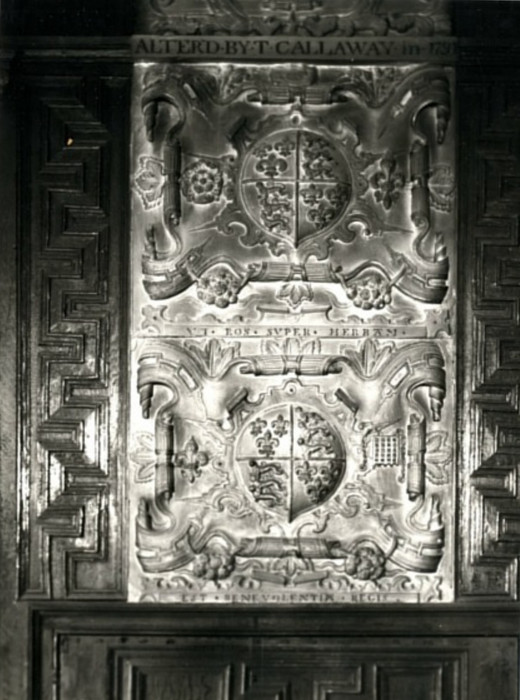This article by Stephen Gilburt was first published by The Enfield Society in newsletter 186, Summer 2012.
The first reference to a manor house at Enfield dates from 1347, and by 1437 there was a substantial building on a seven acre site where Palace Gardens shopping precinct now stands. In 1551 the manor of Enfield was granted by Edward VI to his half-sister Elizabeth. Enfield Manor House was substantially rebuilt to become Enfield Palace and also included a gatehouse, barns, stables and orchards. However, after her accession as Queen in 1558, Elizabeth preferred to stay at the larger Elsyng Palace (near Forty Hall) when her court visited Enfield.
Later in the 16th century the palace was leased out and by the 1630s the grounds were being developed. By the late 17th century the building housed a boarding school run by the botanist Dr Robert Uvedale. In 1663 he planted a cedar of Lebanon which was to survive until 1927.
In 1791-2 the north wing and parts of the south wing and main block were demolished. For much of the 19th century the building was again used as a school before serving as a post office and later as the home of the Enfield Constitutional Club. It was finally demolished in 1927 and Pearsons was built on the site.
Sections of wooden panelling, plaster ceiling and stone fireplaces, principally from the Oak Room in the south wing, were salvaged by the Legatt brothers and incorporated into the Tudor Room which was added to Little Park in Gentleman’s Row. The interior of this reconstructed Tudor Room will be seen on the Enfield Town walk on Tuesday 10th July (see page 5 for details). The Enfield Society hopes that at a future date Ian Jones will be able to repeat his excellent illustrated talk on the Royal Palaces of Enfield.
Images were provided by the Enfield Local Studies Centre and Archive.










